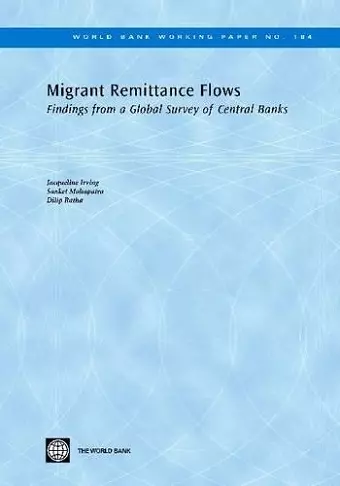Migrant Remittance Flows
Findings from a Global Survey of Central Banks
Dilip Ratha author Sanket Mohapatra author Jacqueline Irving author
Format:Paperback
Publisher:World Bank Publications
Published:26th Mar '10
Currently unavailable, and unfortunately no date known when it will be back

Migrant remittances provide the most tangible link between migration and development, having significant potential to reduce poverty and spur socioeconomic development. Drawing on the findings from responses to a survey conducted in 2008-09 from 114 central banks worldwide (of which 33 are in Africa), this paper aims to better understand how central banks and other national institutions regulate and collect data and other information on cross-border remittance flows. Findings indicate that, although the vast majority of countries, in both sending and receiving countries, collect data on remittances, and 43 percent of receiving countries estimate informal remittances, there is a need for more frequent and better coordinated data collection, both across national institutions and among different divisions within the same national institution, as well as between countries. Countries must take into account new channels and technologies, such as mobile phone service providers, in monitoring remittance flows, as the survey results indicate that many new market entrants?? transfer activities are unregulated. It will be important for national regulatory authorities to work closely with mobile telecoms network operators to strike the right regulatory balance, to better understand these new channels?? associated risks and fully tap their potential for fostering inexpensive, efficient remittance transfer services. Policy reforms and initiatives are needed to address the high cost of transfers, cited in the survey as the top factor inhibiting migrants from using formal channels. Building further on the recent progress by many countries, particularly in Africa, in rendering exclusivity contracts illegal would help increase competitiveness and reduce transfer costs.
ISBN: 9780821383605
Dimensions: unknown
Weight: unknown
84 pages